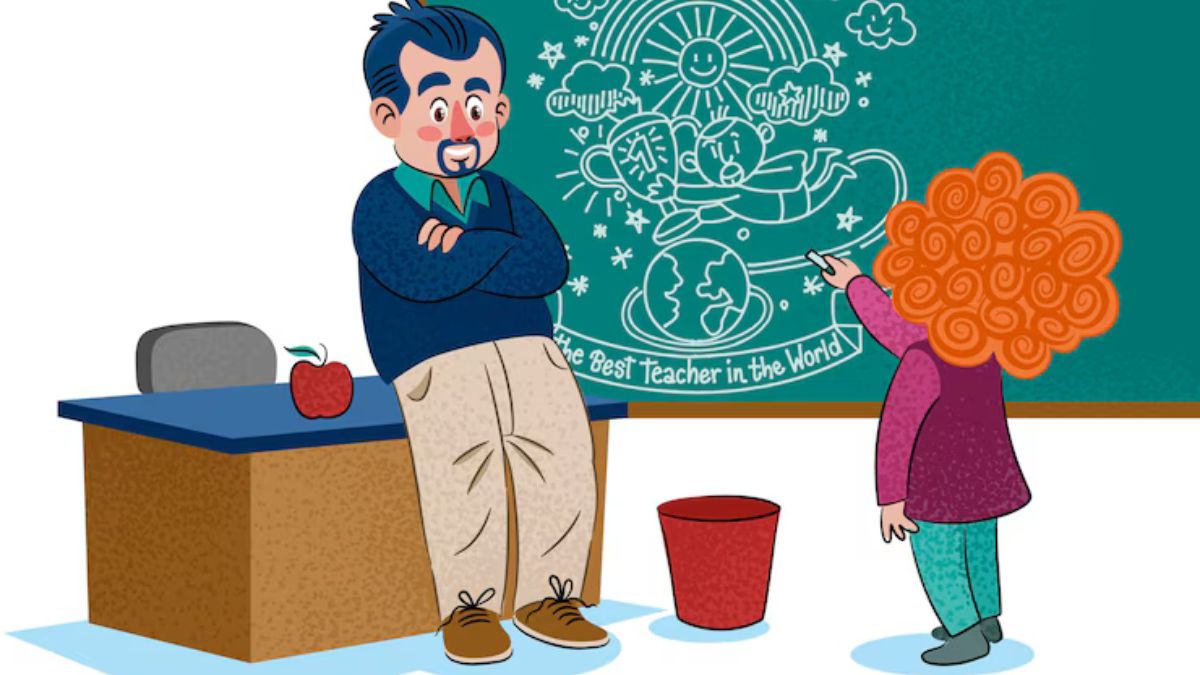EDUCATION
Start Your RCFE Prep Now: Free Practice Test

The RCFE (Residential Care Facility for the Elderly) exam is a significant milestone for anyone aiming for a career in senior care. Passing this exam demonstrates your competency and allows you to work in a field dedicated to providing quality care and support to older adults. While the exam can seem daunting, effective preparation is key to achieving a successful outcome.
Understanding the RCFE Exam
Before embarking on your study journey, it’s vital to understand the structure and content of the RCFE exam. The specific format and content may vary slightly depending on your state’s licensing board, so it’s crucial to consult your state’s official resources for the most up-to-date information. However, most exams share common core areas of focus. Understanding these areas allows you to tailor your study plan for maximum effectiveness.
Key Content Areas Covered in the RCFE Exam
The RCFE exam typically covers a wide range of topics essential for effective management and operation of a residential care facility for the elderly. These areas often include:
- California Health and Safety Code: A thorough understanding of the relevant sections of the California Health and Safety Code is paramount. This code outlines the regulations and legal frameworks governing RCFE facilities.
- Resident Rights and Responsibilities: Protecting resident rights is a cornerstone of quality care. The exam will assess your knowledge of resident rights, including the right to privacy, dignity, self-determination, and freedom from abuse or neglect.
- Medication Administration: Safe and effective medication administration is a critical aspect of resident care. The exam will test your knowledge of medication administration procedures, including proper documentation, storage, and handling of medications.
- Infection Control: Maintaining a clean and sanitary environment is crucial for preventing the spread of infection. The exam will assess your knowledge of infection control practices, including hand hygiene, proper cleaning techniques, and the use of personal protective equipment (PPE).
- Emergency Procedures: Knowing how to respond to emergencies, such as fires, medical emergencies, and evacuations, is vital. The exam will test your understanding of emergency procedures and protocols, including evacuation plans, emergency contact procedures, and first aid response.
- Staff Training and Supervision: Effective staff training and supervision are critical for ensuring quality care. The exam will assess your knowledge of training requirements, staff supervision techniques, performance evaluations, and conflict resolution strategies.
- Record Keeping and Documentation: Accurate and timely record-keeping is essential for compliance and quality assurance. The exam will test your understanding of proper documentation procedures, including resident charts, incident reports, and medication records.
- Resident Assessment and Care Planning: Developing individualized care plans based on resident assessments is a key responsibility. The exam will assess your ability to conduct thorough assessments, identify resident needs, and develop appropriate care plans that address those needs.
- Regulatory Compliance: Understanding and adhering to all relevant regulations is crucial for maintaining a compliant facility. The exam will test your knowledge of various regulations and compliance requirements, including licensing regulations, fire safety regulations, and health and safety regulations.
Effective Study Strategies: A Structured Approach
Effective preparation is not about cramming; it’s about consistent, strategic learning. Here’s a structured approach:
- Obtain the Official Content Outline: Begin by obtaining the official content outline from your state’s licensing board. This document outlines the specific topics covered in the exam, allowing you to tailor your study plan effectively.
- Create a Realistic Study Schedule: Develop a study schedule that fits your lifestyle and commitments. Break down the content into manageable chunks and allocate sufficient time to each topic. Consistency is more important than sporadic intense study sessions.
- Utilize Diverse Learning Resources: Don’t rely solely on one resource. Combine textbooks, online courses, study guides, and practice tests to reinforce your learning and gain a comprehensive understanding of the material.
- Practice Regularly with rcfe test questions: Use rcfe test questions to identify your strengths and weaknesses. Focus on areas where you need improvement. This iterative process helps solidify your understanding and builds confidence.
- Join a Study Group (Optional): Collaborating with others preparing for the exam can be beneficial. Study groups provide opportunities to discuss challenging concepts, share resources, and stay motivated.
- Simulate Exam Conditions: As the test date approaches, simulate the actual exam environment. Take practice tests under timed conditions to get accustomed to the pressure and time constraints.
Conclusion: Your Journey to Success in Senior Care
Preparing for the RCFE exam requires dedication, strategic planning, and effective resource utilization. By following the strategies outlined in this guide and leveraging available resources, including a free practice test, you can significantly increase your chances of success. Remember that your hard work and preparation will pay off, leading you to a rewarding career dedicated to providing quality care for older adults.

EDUCATION
Discover the Secret Behind the Classroom 20x Boom

It started as a whisper in digital hallways. A few enthusiastic educators sharing tips, a thread or two on Twitter, a low-key online community where teaching felt like a mission again. Fast forward to now, and “Classroom 20x” has exploded—20 times over. The numbers don’t lie. In just two years, online teaching forums have mushroomed. Professional development webinars now draw in tens of thousands. Educator-led YouTube channels rival influencers. And the Classroom 20x ethos? It’s gone global.
But what is Classroom 20x? And more importantly, what’s behind this unexpected, unapologetic boom?
Welcome to the frontline of a learning revolution—one that’s being crafted not in Ivy League halls, but by the hands of real-world educators, armed with laptops, lesson plans, and a fierce desire to do things differently.
✏️ What Is “Classroom 20x” Really?
Let’s get one thing straight: Classroom 20x isn’t a product. It’s a movement.
Coined somewhere between a hashtag and a manifesto, “Classroom 20x” refers to the radical rethinking of education through technology, community, and creativity. Think Web 2.0, but for classrooms. It’s less about replacing teachers with screens and more about empowering them with tools, networks, and inspiration. It’s not a brand—it’s a battleground for relevance in a rapidly changing world.
At its core, Classroom 20x is the idea that the classroom no longer lives inside four walls. It’s fluid, connected, and participatory. It could be a Minecraft world, a Discord channel, a Google Doc, or a 5-minute TikTok explainer that reaches 500K students.
But don’t let the “20x” fool you—it’s not just about scale. It’s about exponential impact.
🚀 The Perfect Storm That Ignited It
Let’s rewind to 2020—the year the world went remote. Classrooms shut, learning stalled, and millions of teachers were thrust into Zoom purgatory. At first, it felt like chaos. But something else was brewing under the surface.
Necessity became the mother of digital invention.
Teachers who’d never posted a tweet were suddenly running EdTech Instagram accounts. Students who’d struggled with traditional methods began thriving in digital formats. The veil lifted. The old system was creaky. The new tools? Empowering.
By 2021, things were starting to gel. Online communities like Edutopia, Teachergram, and niche Facebook groups were on fire. Teachers were trading resources, lesson hacks, and self-made digital tools like rare Pokémon cards. Suddenly, education was peer-driven, decentralized, and alive.
The Classroom 20x boom wasn’t just about tech. It was about agency—teachers taking control, students finding their voices, and learning feeling electric again.
📈 By the Numbers: Just How Big Is This Boom?
If you’re looking for receipts, here they are:
-
Memberships in online educator forums have grown by over 400% since 2021. Think Reddit’s r/Teachers, which doubled its subscribers, or niche Discord communities popping up for every grade and subject.
-
Educational content creators on TikTok and YouTube have skyrocketed. Channels like @mrs.wooldridge or @teachergoals now boast millions of followers.
-
Teacher marketplace sites (think: Teachers Pay Teachers, Edupal) have reported revenue surges of up to 900%—some teachers earning six figures annually just from lesson plan sales.
-
EdTech tool adoption in classrooms (Flipgrid, Canva for Education, Jamboard) has more than doubled in public school systems.
And perhaps the biggest number? The 20x itself. Classroom 20x doesn’t just symbolize growth—it’s shorthand for the feeling of multiplied possibility.
👩🏫 Meet the New Education Rockstars
To understand the soul of Classroom 20x, you have to meet its stars—and they don’t come from central casting.
There’s Ms. L, a 6th-grade math teacher from Ohio who built a YouTube channel breaking down algebra concepts with memes and Minecraft. Her subscriber count? 250,000. Her students? Obsessed.
There’s Diego, a bilingual educator from San Antonio, whose TikToks on culturally responsive teaching have gone viral—and influenced curriculum committees in three U.S. states.
Or Fatima, a London-based secondary school teacher who started a paid Substack, turning her practical classroom insights into long-form think pieces—and now boasts a global reader base.
These aren’t influencers. They’re educators-turned-entrepreneurs. And they’re rewriting the rules of engagement.
💡 Why Now? The 5 Factors Powering the Boom
1. Technology Got Good (And Cheap)
In 2015, an online classroom felt like a PowerPoint presentation with a webcam. In 2025? It’s a VR lab, an AI tutor, and a collaborative board in the cloud. Tools are not only better—they’re accessible. And with free platforms like Canva, Loom, and Notion, even underfunded schools can play.
2. Gen Z Learns Differently
Attention spans? Short. Expectations? Sky-high. Gen Z isn’t wired for chalk-and-talk. They crave visual learning, interactivity, and relevance. Classroom 20x answers that with memes, motion graphics, and gamification. It’s not pandering—it’s meeting students where they are.
3. Teacher Burnout Sparked Innovation
Let’s be honest: the system’s been bleeding teachers for years. But instead of checking out, many burned-out educators turned to content creation as therapy—and then found audiences who actually listened. That emotional outlet? It turned into a business model.
4. Community Became Currency
In a world where school districts are slow, and education boards are glacial, digital communities became lifelines. A resource shared in a Slack channel in Toronto could end up saving the day for a teacher in Nairobi. The speed of knowledge sharing is the real superpower here.
5. Education Is Finally Cool Again
Thanks to public platforms, education is having a cultural moment. From Abbott Elementary to academic YouTubers landing book deals, teaching is no longer just noble—it’s aspirational. The profession is being reframed through the lens of creativity, grit, and innovation.
📚 The Business of Teaching 2.0
Here’s a secret: many of today’s Classroom 20x trailblazers aren’t just passionate—they’re profitable.
The rise of the “EduCreator” has turned lesson planning into intellectual property. Teachers are launching online academies, monetizing newsletters, selling digital products, and even snagging brand deals from EdTech companies.
Take LessonHack, a micro-startup launched by two teachers in their basement. They curate high-quality teaching templates for $5 a pop. Three years later? They’re pulling in mid-six figures.
In the Classroom 20x universe, passion meets platform. It’s not about selling out—it’s about valuing teacher knowledge as expertise, not charity.
🌍 It’s Not Just a Western Thing
If you think Classroom 20x is limited to the U.S. or UK, think again.
-
In India, platforms like Unacademy and Byju’s have created an entire content ecosystem where educators become celebrities.
-
In Nigeria, WhatsApp teaching circles are delivering vital science education where traditional infrastructure fails.
-
In Brazil, Telegram channels are powering teacher-led test prep communities with thousands of active learners.
The tools might differ. The energy? Unmistakable. Classroom 20x is borderless.
🎯 So, What’s the Secret?
Let’s circle back. What’s the real secret behind the Classroom 20x boom?
It’s this: the system cracked, and teachers didn’t wait for permission to fix it.
They built their own networks. Created their own content. Forged their own paths. And in doing so, they unlocked something bigger—a model of learning that’s fluid, social, empowering, and yes, profitable.
Classroom 20x isn’t about replacing schools. It’s about rehumanizing them. It’s about saying: we can do better, together. And then proving it.
🔮 What’s Next for Classroom 20x?
As we look ahead, Classroom 20x is evolving fast. Expect to see:
-
AI-infused lesson creation tools that co-write with teachers
-
Gamified curricula with real-time student feedback loops
-
Global micro-credentials that decentralize certification
-
Hybrid classrooms where students toggle between physical and digital learning spaces based on their needs, not bureaucracy
But more than tools, the future is mindset. It’s collaborative. It’s creator-led. It’s agile.
💬 Final Thoughts: Teaching Will Never Be the Same—And That’s a Good Thing
The Classroom 20x boom isn’t just an edtech success story. It’s a cultural shift. A groundswell. A rebellion in lesson-plan form.
It’s the quiet fury of teachers who got tired of being undervalued—and the loud joy of seeing their work land with impact. It’s students becoming co-creators, not just consumers. It’s community over curriculum. Creativity over compliance.
In the end, Classroom 20x is about reclaiming education from the top-down model. It’s saying: let’s build something better, together. And maybe—just maybe—that’s the kind of classroom we always needed.
-

 TOPIC2 hours ago
TOPIC2 hours agoHow Appfordown Simplifies Your App Experience: Tips and Tricks
-

 TOPIC2 days ago
TOPIC2 days agoWhy Wepbound is Revolutionizing the Way We Connect Online
-

 TOPIC3 days ago
TOPIC3 days agoArt for Everyone: How ArtofZio Makes Creativity Accessible
-

 TOPIC2 hours ago
TOPIC2 hours agoUnderstanding Erothtos: What Makes It a Cultural Phenomenon?
-

 TOPIC2 hours ago
TOPIC2 hours agoBehind the Screen: The Stories and Secrets of m0therearf
-

 BUSINESS2 hours ago
BUSINESS2 hours agoThe Benefits of Using Raterpoint for Businesses and Brands
-

 BUSINESS2 hours ago
BUSINESS2 hours agoTransform Your Business with MyWape
-

 TOPIC6 days ago
TOPIC6 days agoHow ATFBoru is Shaping Online Interaction in Unique Ways